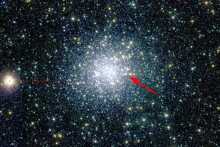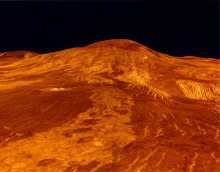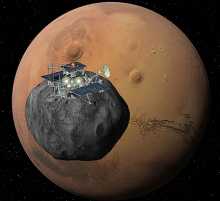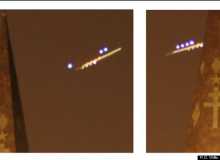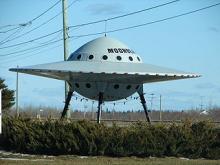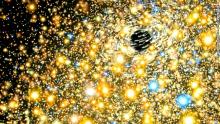2011 is the 9th warmest year in recorded history
Before I go further, I want to point out an ad that I shared on another blog on this network of sites. Note the point where Kobe Bryant says that Richard Branson “owns space” at the 0:18 mark. I found it amazing as I was just talking about that not too long ago in this blog.
Anyway, NASA has found that 2011 has been the 9th warmest year since 1880. I live in Minneapolis and I found it strange to have no snow on Christmas and New Year’s Day with temperatures in the 40-50 F range too. Actually, this is just one of those mild winters that occur in Minnesota from time to time.
But in all seriousness, this is actually part of a trend with 9 of the 10 warmest years happening after the turn of the millennium. I am not jumping on the whole global warming bandwagon, but the data seems to point to it. Meteorologists now anticipate the temperature to increase consistently and this should be a good juncture to discuss NASAs test chamber on ‘climate change’ that mimic the toxic conditions of our neighboring planet Venus.
This really goes back to what Carl Sagan talked about in the "Heaven and Hell" episode on the television series Cosmos: A Personal Voyage regarding what people could learn from Venus. There are a lot of lessons that we can glean from this simulation by NASA as many scientists including Sagan believe that Venus was just like Earth several billion years ago. Now Venus is composed of 98 percent carbon dioxide and studying how this happened will help in thwarting a similar fate for our world.
Russians Accuse U.S. Of "Interfering" With Failed Satellite
With characteristically Russian tactlessness, Popovkin attempted to redirect the blame for the mission’s failure, saying that the mission was sabotaged by an anti-satellite weapon. "We don't want to accuse anybody,” he said accusingly, “but there are very powerful devices that can influence spacecraft now." Of course, that’s a bit like saying, “I want to very diplomatically blame the U.S. for disrupting our space mission because they’re the only ones capable of doing it.”
Science fiction becoming a science fact again
I continue with my talk about extraterrestrial life on this blog with this post. It was actually inspired by an article that I read in the Minneapolis StarTribune while eating breakfast this morning about astronomers discovering more signs that supports the idea of numerous planets in the Universe. It basically sheds light on the debate about life outside of our own and makes us realize that we have only just begun looking and just in our backyard (in terms of the size of the universe I mean).
Have $200,000 lying around? Why not take a space flight? Now you can.
According to the New York Times, Virgin Galactic is now selling tickets for space flights for $200K. The flights are scheduled to be this year and at this point just a little less than 500 people have booked seats on this momentous voyage to outer space.
“Hopefully by next Christmas, myself, my daughter and my son will be the first people to go up into space” on a commercial craft, Richard Branson, the owner of Virgin Galactic, said in a videotaped interview in November. $200K is definitely a bargain for such an amazing experience that should await a space tourist and Allianz has even lined up travel insurance for these wealthy space enthusiasts to purchase.
The Top UFO Story of 2011
2011 was a good year for aliens…or at least for UFO sightings. According to the Mutual UFO Network, or MUFON, there was an increase of 67 percent of reported sightings of unidentified flying objects in 2011, as compared to 2008. That’s quite an increase. Are more unusual occurrences, are people are paying more attention, or are they just not afraid to tell others what they’ve seen?
The Huffington Post has issued a list of the Top 11 UFO stories for 2011. The top 11 includes stories about previously confidential government papers, a petition sent to President Obama asking for all UFO information held by the White House to be released, and a road marker erected on the site of the most widely publicized alien abduction story in history which occurred 50 years ago.
You Saw a UFO, Now What?
First and foremost, remember that UFO stands for unidentified flying object. When someone sees a UFO, it does not necessarily mean that ET has come to visit. There could be a very logical explanation for the unidentified object. Nine out of ten of reported sightings are easily explained.
Investing in Space Exploration. A good Idea?
The introduction to this blog talks talks about how space is the final frontier. Personally, it is the topic that interests and excites me the most. So is investing in space technology and continuing to spend money on the discovery of new worlds and possibly even extraterrestrial life worth the investment. This is especially important right now amid all the economic problems and the debt crisis in the United States.
Let me start off by giving you my take on this whole issue. I know that most Americans are going to disagree with this, but I feel that private companies and NASA should step up their commitment towards learning about the universe. However, I think that private companies should lead the way and NASA should have less of a presence at this point in time. We have to get our priorities right and sort out the issues with healthcare costs, shelter and the people who have lost their standard of living due to this great recession.
Discovery of Higgs Boson "God" Particle May Be Close
On Tuesday, The European Organization for Nuclear Research (CERN) hosted a conference in which two different teams of scientists announced they have reason to believe that the Higgs Boson particle may actually exist. The Higgs Boson (more commonly referred to as the “God Particle”) is actually a theoretical particle, a kind of quantum Rosetta Stone that would allow scientists to definitively explain why anything actually has mass, and gravity, two essential aspects in the field of physics. It would also put to rest a theory 50 years in the making because the Higgs Boson was originally hypothesized by Peter Higgs, of the University of Edinburgh, in 1960.
The “God particle” is important because it is the essential mass-creating particle that supposedly existed immediately after the big bang, the theoretical “birth” of the universe. Michael Lemonick, of TIME magazine, explains it this way.
